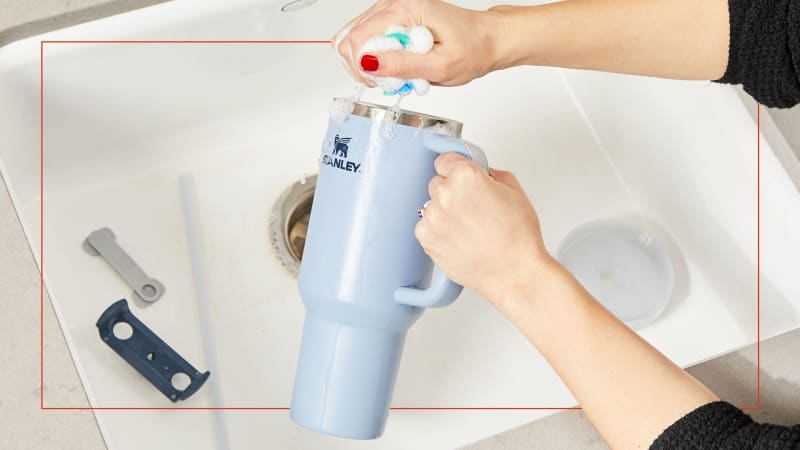Large insulated tumblers, such as the ever-popular Stanley, have quickly become many people’s so-called “emotional support water bottles.”
Are You Cleaning Your Insulated Tumbler Correctly?
Published Feb. 23, 2024.

The brightly-colored vessels hold a ton of water and keep it cold for hours, and it’s common for many users to tote them everywhere and drink from them nearly 24 hours a day.
The Best Insulated Tumblers
Brightly hued insulated tumblers have taken over the internet. Are they useful or just another fad?But just like any other piece of kitchenware, those tumblers get dirty. It’s vital to find time amid all that hydration to properly clean them.
OK, so that’s a problem with a seemingly simple solution—just pop that tumbler in the dishwasher and it will be freshly clean for your next outing. Right?
Actually, it’s not that simple.
Several recent viral TikTok videos have shown owners of Stanley tumblers (and those from other brands such as Owala and Simple Modern) discovering mold or other gunky buildup under the plastic sliding tabs on their cups’ lids. One owner even claimed that the mold was making her sick.
Dishwasher cleanings usually can’t clear away gunk trapped under silicone gaskets or plastic tabs in these tumblers’ lids.
Sign up for the Well-Equipped Cook newsletter
Shop smarter with our ATK Reviews team's expert guides and recommendations.
So, in addition to cleaning your water bottle every day (which remains important) we also recommend a deep-cleaning session every couple weeks to prevent any buildup and keep those supersized sippy cups squeaky-clean.
All you’ll need is a sponge, some dish soap, and a straw-cleaning brush. If you have big hands that won’t reach a sponge all the way into your tumbler’s depths, we also recommend a bottle brush.
Kitchen Gear: The Ultimate Owner's Manual
Packed with science-backed advice from professional equipment reviewers, practical how-to guides, engrossing trivia, and 100+ recipes that showcase great gear, this guide is an indispensable source of collected wisdom found nowhere else.How to Deep-Clean Your Insulated Tumbler
This simple, often neglected deep-clean process should be repeated every few weeks.
- Over your sink, unscrew your tumbler’s lid and remove the straw.
- Take your tumbler’s lid apart to uncover any germ-friendly nooks and crannies. For a Stanley, this means popping the central plastic tab out of the lid and then removing the silicone gasket with the Stanley logo.
- Scrub all parts of your tumbler with a soapy sponge, and rinse well with warm water. (Rinsing is important! if you don’t rinse well enough, your drinks will taste like soap for a while.)
- Use a straw brush with some dish soap to scrub the inside of your plastic straw. Rinse well.
- Thoroughly dry each component and then reassemble the lid.
How Often Should You Clean a Reusable Water Bottle?
And what’s the best way to do it? We have expert advice on both.One last note: Just like any other drinking vessels, metal tumblers can accumulate harmless mineral deposits (a white, powdery film around the inside edges) when used with hard water. You can clear up this “scale” by filling the cup with hot water and dish soap, then letting it soak for a few hours.
For extra-stubborn scale build-up, repeat the soaking with a dishwasher pod that’s been cut in half with scissors (we recommend a similar method for cleaning your coffee pot). In both cases, be sure to rinse the cup thoroughly so your water won’t taste like detergent or soap.


